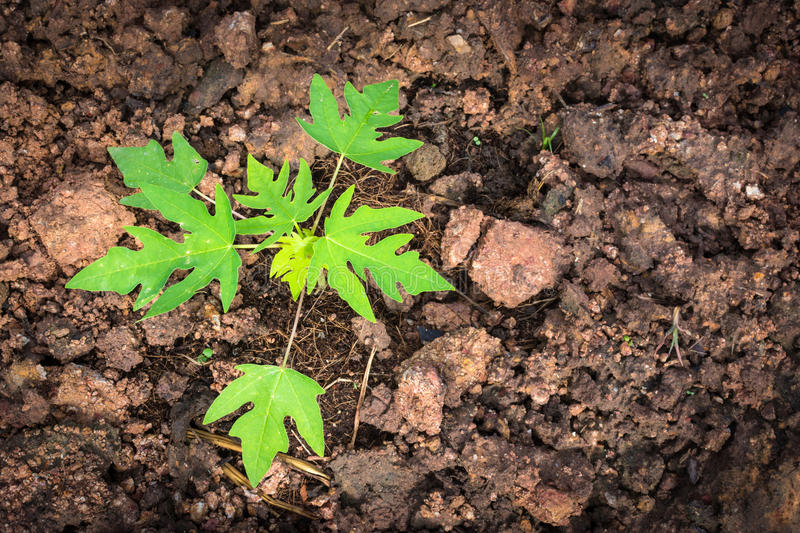
Papaya is a tropical fruiting plant with the colour of ornamental plants. Papaya, botanically known as Carica Papaya, belongs to the Caricaceae family. The Papaya plant is a short-lived herbaceous plant that grows in almost every part of the earth. Growing Papaya trees is one of the best ways to enjoy these exotic fruits yearly. A plant full of dark green fruits, light green, leafless stems, and bright plants on the crown is very attractive.
Papaya is planted during spring (February-March), monsoon (June-July) and autumn (October-November). 5.5.3 Spacing. A spacing of 1.8 x 1.8 m. is normally followed. However higher density cultivation with a spacing of 1.5 x 1.5 m./ha enhances the returns to the farmer and is recommended.
Papaya fruits come in various sizes and shapes and can be mixed with oily skin depending on the type of plant. Papaya fruits have seeds inside the pulp that range from sweet and smooth yellow to orange-red flesh. There are two major types of Papaya, small and large. We will learn how to grow Papaya from seeds at home as below.
Site and Soil

Papaya is developed into any well-drained soil. The plant has shallow roots and will not tolerate excessive moisture or standing water. Raised beds can partially overcome drainage problems. Although Papayas bloom best in full sun, protection from wind or cold weather is also needed. Near the south or southeast of the house is the hottest spot in most residential areas. Some protection from the air provided by other plantings or structures is helpful. Good soil preparation methods are key to growing Papaya, such as deep ploughing and mixing lots of organic material. The main soil characteristics for growing Papaya trees are as follows;
- Good drainage
- High organic matter content
- Loose and moist
- pH level 6 to 7
Grow Papaya from Seeds at Home

Papaya is an excellent sunny plant for the summer season. Papaya plants require light, moisture, heat, and abundant fertilizer and water. These plants need plenty of water. You want to water it well but never let the water stand on the soil. Indoor-grown Papaya plants grow so fast that they can reach the roof in months. Because of this, they are often cut off from the top to keep them in check.
Cut the main stem one to two feet long. The plant will send many new shoots from the base of the plant. When the shoots are one to two feet long, select the best and cut off the other, including the original main stem. If you have moved the Papaya plant outside for the summer, prune it extensively before bringing it in for the colder months. Use a loose, well-drained, very rich potting mix when growing indoors.
If the soil in the pot is too thick and there is a lack of drainage, rotting problems can occur. Watering is an essential part of growing Papaya. Plants should be watered based on the moisture in the soil to prevent root rot, but even large leaves need enough water to support them. In winter, the plant prefers to be drier. A plant damaged by frost is extremely susceptible to root rot. In the summer, they can manage all the water you can give them, provided the drainage is good.
Water the plant well, and water it every 3 to 4 days to avoid excess moisture and dampness. Initially, the water requirement for Papaya plants may be limited, which is required to prevent drought, but in the impact stage, the Papaya plant needs 25 to 35 litres of water per day.
Indoor Papaya plants rarely flower and bear fruit, especially when grown from seeds harvested from grocery store fruit. However, if you have a bony variety and have given it enough heat and light, it can bear fruit within six to 12 months of planting. When the fruits are completely yellow, pick them from the tree. It is best to refrigerate Papaya for two to three days before eating.
Papaya Growing Conditions
Papaya plants are wood-like plants that grow fast. The ideal temperatures for growing and producing Papaya are 21 and 32°C. The Papaya crop grows best in sunny climates in hot, humid, and dry climates. Papaya plants grow best in soil pH levels 6 and 7. Proper drainage soil types are suitable for the excellent growth and development of Papaya. Waterlogged conditions in Papaya crop soils can lead to root diseases or even kill plants. Organic matter can be added to the soil before planting for good root growth.
Papaya Seed Germination
You can grow Papaya from seeds. Sow seeds in moist perlite and cover the pot with a plastic bag to retain moisture. Keep in a warm, bright place. Use a heat mat to maintain a stable 21°C temperature for best results. Seeds should germinate in about 5-8 weeks. You can expect flowers in 10 to 12 months.
Papaya seeds must be collected from healthy, ripe fruits from plants free from pests and diseases. Seeds usually propagate it. In addition, the seeds should be rubbed with ash to remove the mucilaginous coating to improve germination.
Grow Papaya in the Backyard
The best place to plant Papaya in the backyard is in the south or southeast part of the house, with some protection from wind and cold weather. Papayas like well-drained soil, and growing Papaya trees will not tolerate wet conditions due to shallow roots. Papaya plants grow easily from seeds, even seeds harvested from grocery store Papaya fruit.
To prepare the seeds, remove them from the Papaya, spread them on a sheet of paper towel, and leave them to dry for a week. At the end of the week, wrap the seeds around to remove the husks covering the dry seeds, then store them in a cool, dry place. To grow Papaya seeds, place them in the soil, starting with the seeds. The seeds germinate faster, and the plants will start to grow faster. When the plants are a few inches tall, transplant them into large containers to grow as houseplants.
Grow Papaya on the Terrace
Papaya is a healthy fruit you can easily grow in your terrace garden. It is rich in Vitamin A and is a fantastic fruit for keeping your eyes healthy. Start growing fruit in a container on your terrace to get fresh and healthy fruit. Growing Papaya is usually done by collecting seeds from ripe fruits. Choose a variety of seeds to grow in pots.
Prepare a pot full of clay. Provide adequate water and sunlight to the plants. Papaya needs good fertilizers for rapid flowering. Use organic fertilizers to control pests and diseases. Harvest Papaya when the fruit turns yellow in hot temperatures.
Tips for growing Papaya from seed
- Buy hybrid Papaya seeds which propagate.
- Choose sweet fruit seeds with good taste, in case they are not recognized.
- Seeds can be sown at any time during the summer. Seeds can be sown in polythene bags.
- The seeds germinate in about 2-3 weeks.
- Papayas are a heavy food and need to be fertilized regularly. Therefore, a fertilizer application is also recommended.
- Papaya has large soft leaves; in hot weather, a lot of water evaporates, so they need more water than average.
- Papaya can only be grown in light clay soils rich in organic matter.
- Provide good quality manure and dung manure every two months for planting.
- The Papaya plant does not need to be watered during the rainy season. Water the Papaya tree 8-10 days in winter and twice a week in summer.
- Drainage is very important; water clotting can cause collar roots. Place the tree’s base on the ground and drain the excess water.
- Within a year of transplanting, the Papaya begins to bear fruit. However, freezing temperatures will surely destroy Papaya trees, as these tropical plants are not accustomed to cold. You can protect them from a short cold with proper care, but long freezes will finish them off.
Fertilizer for proper fruiting
To maintain a continuous supply of fruits, it is necessary to provide an adequate amount of fertilizer from time to time. A balanced C/N (Carbon: Nitrogen) ratio is also essential for a good fruit set. The next dose of fertilizers is recommended per plant to get maximum fruit yield.
Strengthening 25 to 30 kg of well-decomposed farmyard manure with a bio-fertilizer mix enhances crop growth and disease resistance. In addition, enriched organic fertilizers can be added, including Biofertilizers, worm compost, semi-cakes, and other plant-useful ingredients. 1-2 kg per plant per year.
Papaya Growing in containers
- Choose a large container; a large growing bag and wooden box with drainage holes can be selected.
- Add good quality potting mixture such as organic veggie mix to the container.
- Plant 2-3 months old dwarf, hybrid variety Papaya.
- If regular varieties are grown in containers, planting more than five plants in a garden and planting new trees yearly to keep the plants dwarf is recommended.
- Keep the container in an open sunny place; it must be watered regularly.
Growing Papaya in pots
- Buy a good-looking healthy Papaya. Choose the ones that are lighter or darker. An excellent medium shade of brown colour is good. Dry slightly in the sun for a day or two.
- Take a pot with adequate drainage – You can plant them in small pots and then transplant them into larger ones.
- Fill your pot with the potting mix – You can use a mixture of common garden soil, organic fertilizer, and sand. Lay a layer of sand and stone on the bottom to promote further drainage.
- Leaving a few inches above the top, the pot should be filled with mud. Now you can sow the seeds that have been drying for one or more days. Keep them out evenly on the surface. Cover the seeds with an inch of potting mix.
- Water the seeds well and keep them in a bright sunny place. Papaya trees love the heat.
- After 2 or 3, you will see that your plants grow. Leave them for another two weeks to grow to about 10 inches. Keep the soil moist.
- It’s time for a healthy-looking transplant, about 4 or 5 weeks after germination. If the shape of the leaves is well pointed and they do not have legs, then you can count them as healthy except for those whose leaves are small and not as large as others.
- Put healthy ones in their containers. Keep at least 4 or 5 healthy as only females bear fruit after pollination.
- Examining the buds is one way to tell if your plant will bear fruit. Fruit plants will have only one large bud. This is because there are many insects in one flowering period of male trees.
- It can take up to 9 to 11 months for the fruit to appear on your plants. Keep the plant in maximum heat. Keep checking soil moisture. They like to be moist but not soggy.
Nutrients in Papaya plants
Papaya needs regular application of nitrogen fertilizers. Apply nutrients at 15–20-day intervals depending on the plant’s response. It also needs potassium-rich nutrients for better yields, so use the nutrients the plants need. Nutrition deficiency is the biggest problem of all edible plants. There can be many causes of malnutrition in plants, such as sunlight, water, and soil. Here are the elements and symptoms that affect the growth of plants.
Symptom of nutrient deficiency
- Nitrogen is slow growth; leaves turn yellow
- Phosphorus reduces leaf production in Papaya; leaves turn blue
- Potassium – purplish-brown patches at the base of petioles
- Magnesium reduces plant height, and leaves turn a yellowish-brown color
Harvesting tips for growing Papaya
The fruits turn from dark green to yellow as soon as they ripen. Therefore, papaya fruits are harvested when they are mostly yellow. Allow the fruit to ripen for a few more days at room temperature. It is ready to eat when the skin is completely yellow and slightly soft to the touch. Green Papayas should not be eaten raw; if picked while still green, they will not cook properly.
Financial and Business expert having 30+ Years of vast experience in running successful businesses and managing finance.





